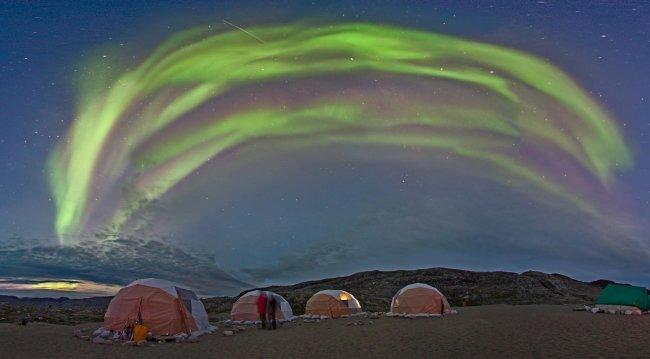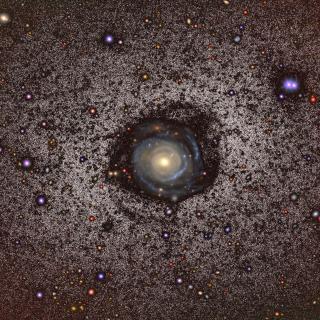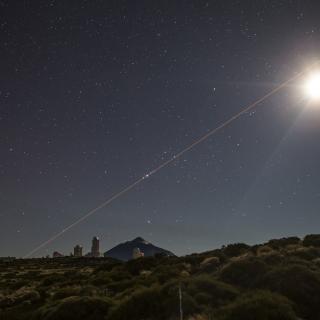Polar auroras are only visible from the polar regions of our planet - a spectacular astronomical phenomenon caused by solar activity, which appears as light curtains with changing shades, but this summer we have the opportunity to observe boreal auroras - those auroras seen in the northern hemisphere - live from home with just an Internet connection. The observation time is good for observation as the sun shows high activity thanks to the peak reached in 2014.
From August the 22th to September the 5th, Shelios 2016 expedition, coordinated by IAC researcher Miquel Serra-Ricart, will observe the auroras from southern Iceland and Greenland. "The probability of seeing auroras decreases as we get further away from the solar maximum, which occurred at the beginning of 2014. There have been several solar flares in the last weeks. If the weather is good we will see auroras, but solar activity will continue to decline in the coming months and watching this beautiful show will become more and more difficult."
STARS4ALL European project team members will join the expedition to co-produce a live broadcast of the phenomenon. Videos and pictures of the auroras will be broadcast live on the website sky-live.tv from Iceland and Greenland.
Also involved in the expedition will be the two winners of Route of the Stars project - STARS4ALL, two European students that will join the other national finalists in that competition.
The aurora phenomenon
This wonderful celestial spectacle occurs when very energetic particles originating from the Sun (solar wind) reach the Earth's atmosphere. The entry of these particles is lead by the Earth's magnetic field and for that reason it can only penetrate the North Pole (Northern Lights) or the South Pole (Aurora Australis). Auroras are formed of huge light curtains that change rapidly and show different shades. The light emission is produced in the atmosphere (between 100 and 400 km high) and is due to the impact of the solar wind (essentially electrons) with oxygen atoms (producing green tones) or nitrogen molecules (producing reddish light).
Live Auroras
The STARS4ALL European project, in collaboration with the portal sky-live.tv, will broadcast the auroras live from Iceland and Greenland. One broadcast will take place from Iceland (farm Hestheimar, see route map), on August 25th and 26th 2016. We will also broadcast from Greenland during September the 1st and 2nd. The total time of 1h 15m will be split in four 20 minute transmissions:
Transmission 1: August 25th, 23:45-24:05 UT (23:45-24:05 local, +1 day 01:45-02:05 CEST).
Transmission 2: August 26th, 23:45-24:05 UT (23:45-24:05 local, +1 day 01:45-02:05 CEST).
Transmission 3: September 2nd, 01:15-01:35 UTC (-1 day 23:15-24:35 local, 3:15-3:35 CEST).
Transmission 4: September 3rd, 01:15-01:35 UTC (-1 day 23:15-24:35 local, 3:15-3:35 CEST).
Three Spanish supercomputing centers, the Centro Extremeño de Tecnologías Avanzadas (CETA-CIEMAT), the Consorci de Serveis Universitaris de Catalunya (CSUC) and the Instituto de Astrofísica de Canarias (IAC) will collaborate for the dissemination of the broadcasting web portal (sky-live.tv).
STARS4ALL (stars4all.eu) is a project funded by the H2020 Programme of the European Union, under Contract No. 688135. 8 institutions work on STARS4ALL (UPM, CEFRIEL, SOTON, NEC, ESCP Europe, IAC, IGB and UCM) from 6 European countries. The aim of STARS4ALL is to raise awareness about the existence of light pollution in many of the places where we live and the importance of taking action to reduce it.
Audiovisual material
- Auroras in Greenland Images
- Auroras in Iceland Images
- Auroras videos
Contact address:
Miquel Serra-Ricart, IAC researcher, mserra [at] iac.es (mserra[at]iac[dot]es)
Spain: 0034649848305
Iceland 003548239316



